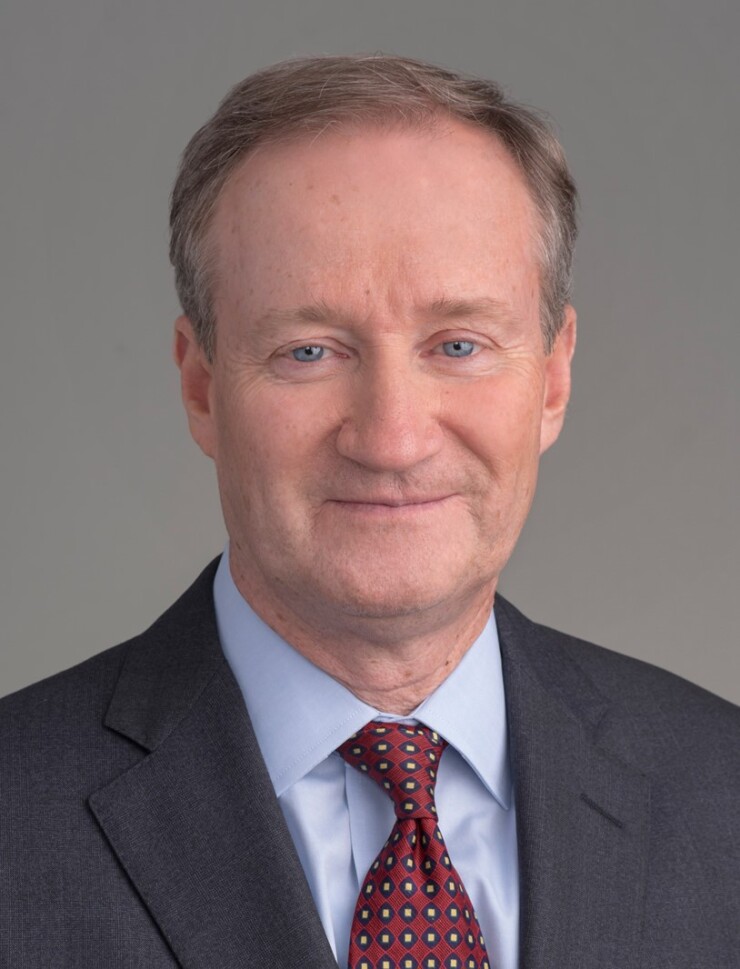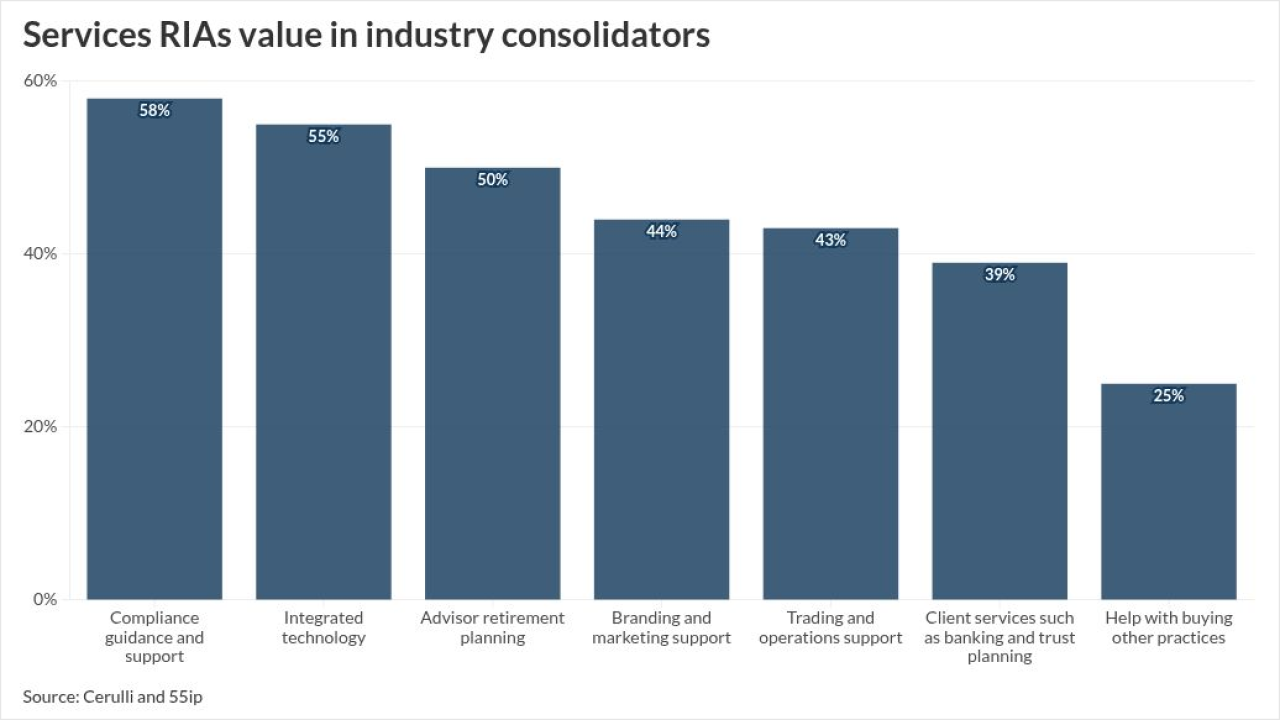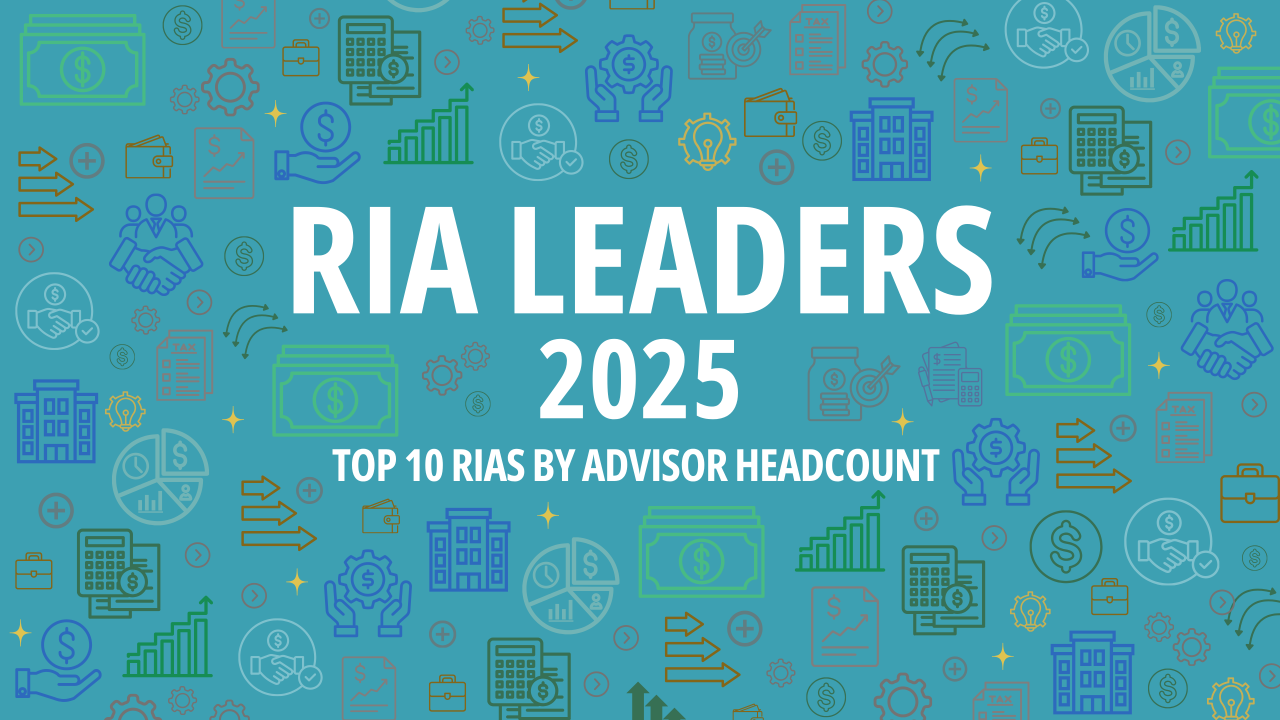An escalating race to zero in fund fees and improvements in data and analytics are among the leading issues impacting asset management companies today.
Money Management Executive discussed these trends and more with various industry leaders who are shaping the space.
"Data pinpoint the advisors who are interacting with your content," says 361 Capital President Josh Vail. "The relationship between asset managers and advisors is evolving, with advisors rightly expecting managers to provide guidance about navigating markets, not just offer product.”

Dimensional Fund Advisors' co-head of research, Savina Rizova, says demand for income-based retirement savings vehicles is growing.
It's "a trend we believe will continue to impact the asset management industry," Rizova says.
For more on what Vail, Rizova and four other executives from across the industry are focused on, read our special report.

THE TECH EVOLUTION
Symmetry Partners Director of Investment Product Strategy & Communications Casey Dylan
Several significant long-term trends have driven the rapidly changing asset management industry. Most notably, new technologies are disrupting the industry and have contributed to accelerated fee and margin compressions.
The fintech revolution is forcing the financial services industry to evolve rapidly. Historically, financial institutions have leveraged in-house teams and third parties to provide investor services.
That period is clearly behind us.
Now, major financial players are investing millions of dollars in order to vertically integrate those services and reduce the cost and friction associated with delivery, while leveraging technology to achieve scale and efficiencies.
The acceleration of the tech evolution has had an impact on the competitive landscape and customer expectations, which has accelerated the fee and margin compression the industry is clearly undergoing. While this is beneficial for investors, it is challenging for providers, as both are increasingly seeking low-cost solutions.
This pressure has led to a shift in product set, with lower-cost ETF structures taking the main stage. Quantitative, data-driven investment strategies, such as passive, index-based factor investment approaches are also the beneficiaries.
-
A record 186 funds were shuttered last year. What does this mean for the future of the industry?
January 7 -
Brexit, worries about trade wars and rising interest rates have prompted a selloff in developed country stocks.
January 16 -
The funds include a wide range of offerings from emerging markets to precious metals, multi-strategy and REITs.
January 14
Total assets in these strategies have now reached parity with that of active management, and we expect them to continue to dominate flows over the long run. At the same time, fee compression has led many firms to find ways to increase the value they provide beyond investments, including education and practice management.
The confluence of these trends has resulted in greater manager consolidation, as smaller active managers find it tough to compete with the race to zero in fees, the costs of providing additional value and the level of technology investment.

IMPROVING COMMUNICATION
361 Capital President Josh Vail
Boutique asset managers face a daunting distribution dilemma: how do smaller sales teams best approach a network of advisors?
Data and analytics make the task doable, and results in more profound conversations with advisors. The use of data analytics is not just a trend affecting large firms, but also has the potential to affect boutique asset managers and specialist distribution teams to an even greater extent.
With limited resources, each salesperson must identify only the 200 to 1,000 advisors with whom they are most likely to build a meaningful relationship.
Data pinpoint the advisors who are interacting with your content. Additionally, the relationship between asset managers and advisors is evolving, with advisors rightly expecting managers to provide guidance about navigating markets, not just offer products. Data help build that relationship. By tracking the usage and consumption of our content, we garner insights into what is top-of -mind to the advisor community. We can then dedicate more energy to writing about and discussing those issues and engaging further with clients and potential ones.
Analytics also improve the conversations our sales team have with advisors. By identifying what information the advisor consumes, distribution members can dive into any questions the advisor may have.
The proof is in the numbers: Last year, more than 50% of our new sales came via leads from someone accessing our thought leadership. Data and analytics have made those resources — and the follow-up conversations — more relevant.

BEYOND THE RACE TO ZERO
Robo Global Head of Capital Markets and Sales Chris Buck
Large custodians may discount ETF management fees to attract more clients.
But smart investors look beyond the headline of management fees by considering a multitude of other factors — SEC lending revenue, tracking difference, bid/offer spread cost and the risk-adjusted returns of comparable funds. As investors begin to appreciate these other considerations to zero-fee funds, here are three resulting impacts on asset management operations:
1. Boutique asset managers could experience a resurgence. Boutiques are not trying to be everything for everybody, like many of these larger firms. They're trying to provide great value to those who want it. Asset management continues to see large-scale players partner with boutique investment firms that focus on a particular strategy or competency. Managers caught in the middle will likely change product offerings and morph active strategies into private equity offerings or non-transparent active ETFs.
2. More asset managers will continue to discount ETF pricing. This will help attract new clients and/or there will be an attempt to make up the revenue loss with other ancillary products such as proprietary money market funds or advisory fees on digital advice. Given the volatility in markets and behavior of investors to buy high and sell low, there are unprecedented levels of cash in accounts that could increase net interest income for sponsors with proprietary money market funds.
3. Publicly traded asset managers will continue to restructure their labor force and increase productivity by using robotic process automation. RPA is based on the notion of software robots or AI workers increasing efficiency in servicing clients.
This is not a bullish case for employees and client service professionals. The lower fees will probably result in more layoffs for larger asset managers, which could impact the investors' experience and stifle innovation.
The race to zero beta narrative is more important to the large asset management executives than to investors. There is no doubt investors can benefit from lower fees, but they will also choose to pay more for innovative offerings.

BEATING THE BENCHMARK?
Procure Holdings President Bob Tull
A strategy called ensemble active management uses ensemble mathematics to construct active portfolios where returns are predicted, with a high probability of success, to exceed the benchmark.
The technology has been in use since 1979 in chip design and entertainment, and is moving to investment management.
The technology has three core components: big data collection and analytics, predictive algorithms and machine learning. These tools are being employed by active managers to support their security selection process and release them of their beta anchors. EAM delivers alpha portfolios with acceptable risk tolerances and the mitigation of toxic portfolio tails.
Each manager begins their process by defining the benchmark and selecting competitive funds within the same investment benchmark category. Within two weeks, the manager receives the EAM portfolio of expected excess benchmark returns. The longer the EAM technology remains stable, the greater the predictive capabilities through machine learning, and the greater chance of capturing excess returns.
EAM is the counterpunch to the increase in passive management. It will reinvigorate the discussion of active verses passive management by providing a technology solution for active managers.
EAM will help reduce asset fee compression, as active managers will be able to deliver consistent excess performance. This is a process I believe will impact active management just as ETFs did for passive investments.

MANAGING NEW EXPECTATIONS
Seismic Managing Director of Financial Services William Finnegan
There has been a huge movement toward the so-called consumerization of the asset management business over the past decade, as new approaches are breaking down barriers, lowering fees and making investing more accessible to a new generation of investors.
Coincident with this has been a shift in expectations for the investing experience, which has major implications that all asset managers and their sales and marketing teams must grapple with.
The current processes used in asset management for generating marketing materials and reaching out to clients and prospects are inefficient and ineffective.
Research confirms this: SiriusDecisions found that roughly 70% of marketing collateral goes unused, while a Gatepoint survey reported that 67% of business decision-makers said personalizing content is the key to improving the impact on sales.
New technologies known as sales enablement, which allow for highly customizable, compliant materials, produced in real time and delivered digitally, are emerging to address this challenge for the asset management industry — and they're arriving at the right time.
-
Industry leaders weigh in on key issues, including technology advancements, the increasing focus on ESG and developments in ETFs.
June 14 -
Its purchase includes the manager’s mutual fund and ETF businesses.
November 15 -
Advancements in fintech, new products and a shifting regulatory environment are among industry executives' top concerns.
July 17
Asset managers should take note of a recent study from EY, which found that most investors today are looking for a combination of digital access and human interaction. This is a trend that's not only upending asset management but wealth management as well.
Asset managers who build their marketing approaches to leverage new technologies in ways that allow them to better partner with advisors and wealth managers — who are themselves going through their own period of upheaval — will be better positioned for long-term success.
The future of asset management requires the industry to look at the present state of the retail sector. Embrace technology, learn about your customer or risk losing them to someone who does.

DEVELOPING RETIREMENT TOOLS
Dimensional Fund Advisors Co-Head of Research Savina Rizova
The increasing prevalence of defined-contribution plans as primary retirement savings vehicles — and the corresponding burden on participants in managing their investments — reinforces the need for continued advancements to improve retirement outcomes.
Retirement-focused investment solutions, more readily accessible information and comprehensive planning tools that allow participants to better manage the transition from accumulation to decumulation are all areas we believe have seen significant progress in recent years.
People saving for retirement now have access to investment solutions designed to effectively manage market risk, inflation risk and interest rate risk.
There has also been emphasis on providing more meaningful information on projected income in retirement. A statement that translates a participant's balance into monthly annuity income is a welcome improvement.
But how can a participant plan effectively without information about the uncertainty of such an estimate, and how their current investments are managing the relevant risks?
Demand for income-focused retirement solutions, as well as for reporting and planning tools, is a trend we believe will continue to impact the asset management industry.
We believe it's critical for asset managers to work alongside plan sponsors and regulators to address that demand and help improve retirement outcomes.





